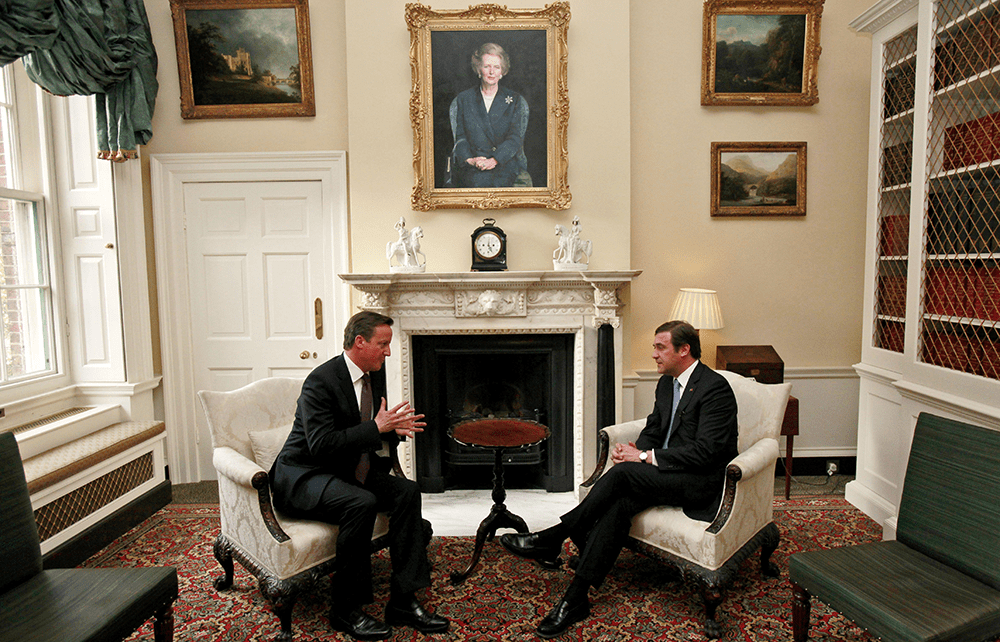The art of politics
Keir Starmer moved a portrait of Lady Thatcher from one room at 10 Downing Street to another because he found it ‘unsettling’. Some more possibly unsettling artworks that have hung at No. 10:
— ‘More Passion’, by Tracey Emin, featuring the words ‘More Passion’ in neon, was installed by David Cameron in 2011. In 2022 Emin wrote on Instagram about her unhappiness that it was still there after the revelation of Boris Johnson’s lockdown parties. His ‘behaviour and lack of contrition’, she said, were ‘bizarre’.
— Annabel’s – a series of lino cuts depicting Sloanes revelling at the Mayfair nightclub in the hedonistic mid-1980s – also hung in Downing Street during Johnson’s premiership. The artist was Nicholas Garland, whom Johnson appointed the Cartoonist of the 2012 Olympics when he was Mayor of London.
— ‘La Rêve de l’Artiste’, by Jean-Antoine Watteau, an 18th-century painting of the artist collapsed at his easel dreaming of naked cherubs, was bought by the first prime minister Sir Robert Walpole, and hung in his wife’s Downing Street dressing room. It is no longer at No. 10.
Mirror, signal, manoeuvre
How many driving tests are passed?
— In the year to March, 1.9 million driving tests were taken, of which 48% were passed.
— The pass rate has been in the mid to high 40s percentage range in each of the past 15 years, the highest being 49.8% in the year to March 2021 and the lowest 44.2% in the year to March 2008.
— However, the number of drivers who pass with no faults is increasing. In the year to March 2024 it was 2%, the highest recorded and up from 0.2% in the year to March 2008.
Making the grade
Single word Ofsted gradings are to be replaced with longer ‘report cards’. How many schools in 2022/23 fell into each category?
Outstanding 7%
Good 69%
Requires improvement 20%
Inadequate 4%
How much change was there since the previous inspection?
— Among those previously judged to be outstanding, 21% were still outstanding, 66% were good, 11% required improvement and 2% were inadequate.
— Among those previously judged to be inadequate, 1% were now outstanding, 65% were good, 30% required improvement and 3% were still inadequate.







Comments